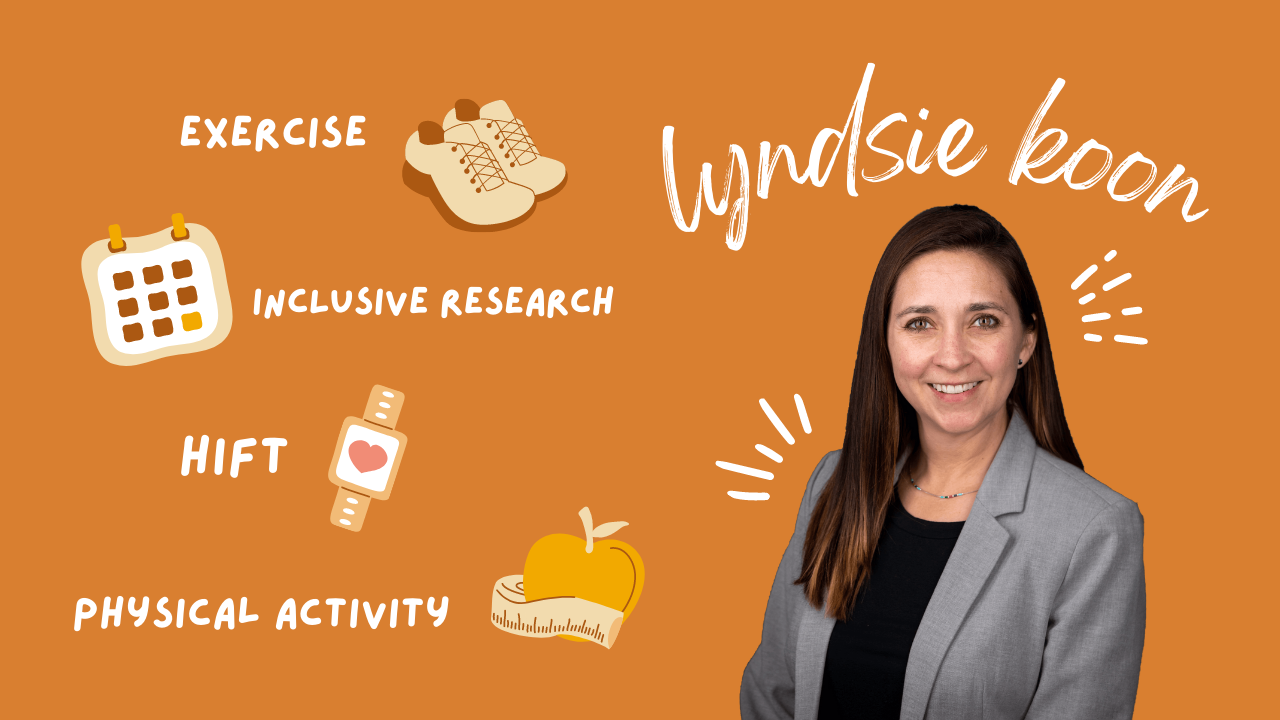Applying Adaptive Exercise to Meet the Needs of People with Disabilities
Lyndsie Koon applies her interdisciplinary interests in exercise and disability to conduct research that aims to improve the health and well-being of individuals with disabilities across the life span.

In this interview, Koon talked about her ongoing and upcoming projects and her experience at the KU Life Span Institute. This interview has been condensed and edited for clarity.
How did you start your research journey at KU and the Life Span Institute?
I came to KU in the fall of 2019 from the University of Illinois where I was finishing a post-doc. I am an assistant research professor and the associate director of the Research and Training Center on Independent Living under Dr. Jean Hall. My area of focus there is physical activity, exercise, and disability across the life span. I previously worked with older adult populations, which has converted more into aging adults with long-term disability, which is a really important population because people with disability are living longer lives. We want to maintain functional independence for them as long as possible and the aim is to do that through sustained engagement in exercise and physical activity.
What are some of your current projects and research?
I recently received an internal grant award for a project about increasing physical activity for manual wheelchair users. It's a two-year pilot project where we will attempt to motivate the participants to be more physically active using physical activity technology (e.g., Fitbit, Garmin).
I serve as the qualitative research lead on a National Institute on Disability, Independent Living, and Rehabilitation Research, or NIDILRR, funded project: Research and Training Center Promoting Interventions for Community Living (PICL) where we are assessing the effects of home- and community-based interventions on community engagement for people with disability.
I also continue to work with my colleagues at the University of Illinois and the Rehabilitation and Engineering Research Center TechSAge (Technologies to Support Aging-in-Place), where we are continuing efforts to understand activity challenges in depth among older adults with long-term vision, hearing, and mobility disabilities. I oversee the mobility disability group, which for this round of data collection, includes adults who are aging with long-term multiple sclerosis, which is called the ACCESS project, or Aging Concerns, Challenges, and Everyday Solution Strategies.
I am also funded by the Kansas Disability and Health Program where I am implementing a remote, physical activity intervention called WOWii, or Workout on Wheels Internet Intervention, using tele- and activity tracking technologies to increase exercise participation for people with mobility-related disabilities
Those are the projects that fund me currently, but then I have my work that I'm working very hard to get funded, and I'm really excited about it.
Please describe the new area you want to pursue.
In the literature, it's called High-Intensity Functional Training (HIFT). It’s like CrossFit, defined as constantly varied, high-intensity, functional movements. HIFT is innovative and inclusive and can be implemented with limited equipment in nearly any setting for a variety of disability types and support needs. It’s comprised of a variety of exercise modalities that involve functional, whole-body movements intended to mimic activities required in everyday life such as sit-to-stand, lifting overhead, transferring, or ambulating with or without supports.
There are a lot of positive functional outcomes that may result from this type of training, but additionally, there are strong perspectives of community and relatedness, competence gains, and perceptions of autonomy and empowerment. For example, our pilot data show that participants report having gained confidence in transferring independently and improved perceptions of strength they never knew they had, and a strong sense of community among other HIFT members.
 Individuals with the Adaptive Training Academy participating in an exercise program. Credit: The Adaptive Training Academy
Individuals with the Adaptive Training Academy participating in an exercise program. Credit: The Adaptive Training Academy
What excites you about this research?
What drives me is learning about these adaptive athletes, as they refer to themselves in the HIFT community, and the potential of an empirical lens illuminating the important outcomes of their experience with this unique exercise program. Doctors and other healthcare providers do not often encourage people with disabilities to exercise more, mostly due to the fact that they don’t know what to recommend or where to send them. Or worse, the perspective is to tell people with disabilities “don't go too hard” or “don't lift that weight.” HIFT has an entirely different approach that views participants as capable and competent, and the context is entirely adaptable to the individual, making it a well-rounded, inclusive, and effective exercise environment for people with various types of disability.
What interests you in sports and exercise science overall?
I was an athlete growing up and in college and coached soccer for many years, so I have a natural drive toward sports, with a particular interest in the psychosocial aspect of it all. Furthermore, healthcare costs and chronic conditions are preventable with lifestyle choices such as physical activity; I am driven to create a more physically active society through any means necessary.
What have you learned since joining the Life Span Institute?
I feel like I can really succeed here at KU, and the Life Span Institute has set up great supports. But I think one of the most important things I've learned since being here is the need to conduct inclusive research. “Nothing about us without us” is the ADA motto, and research efforts that include key stakeholders and members of the target population are imperative to obtaining their input from start to finish. From government policy, medical procedures, developing exercise equipment for people with disabilities, we need to conduct these efforts with people with disabilities.